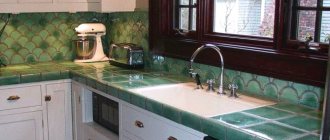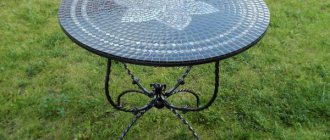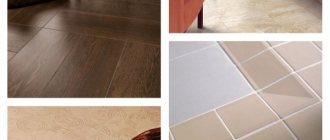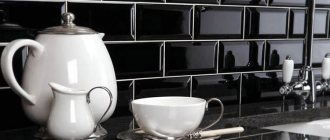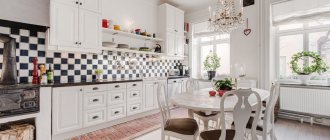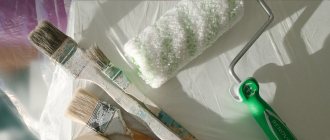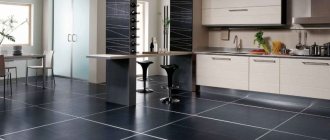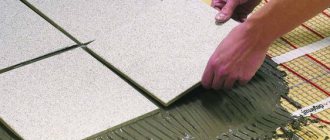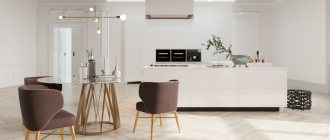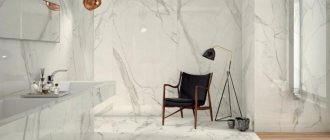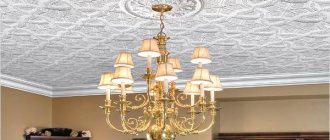Parquet made of oak, ash and other valuable wood species is traditionally considered the standard for flooring. This natural material has high decorative and environmental qualities. However, such parquet is susceptible to the negative influence of moisture, temperature changes, chemical compositions, and surface abrasion. To maintain its visual appeal, wood flooring requires periodic updating. Without proper care, parquet or parquet boards fade over time, dry out, and cracks and chips form in it. Loose, damaged elements must be replaced, which can disrupt the harmony of the flooring pattern.
Manufacturers of building materials offer an alternative floor finishing option - ceramic tiles. Previously, tiles were used as flooring in bathrooms, toilets, and technical rooms. However, recently, tile models with a surface that imitates wooden parquet have appeared. Moreover, this coating is durable and practically unaffected by external negative factors.
Floor tiles for parquet
Main types of floor tiles
Depending on the materials and production technology, there are several types of floor tiles.
| Variety | Description |
| Made from various types of white clay and crushed mineral rocks. The products are formed by pressing and then fired at high temperatures. In terms of strength, durability, and resistance to stress, the material is not inferior to natural stone. It has the lowest degree of moisture absorption among all types of tiles. If previously it was used mainly for finishing the floors of technical rooms and bathrooms, now there are many models of various shapes and shades that are not inferior in appearance to wooden parquet. |
| It is made using old Italian technology from red clay with the addition of crushed pumice. The tiles are formed by extrusion, then fired once at high temperature. The products have a porous structure with a low degree of moisture absorption. Rough matte surface with colors of yellow, red, brown tones, as close as possible to the appearance of wood. |
| Produced by extrusion from white and red clay. It is characterized by high density, which makes the tile waterproof and resistant to stress. In appearance it is more reminiscent of brick, but there are models that imitate parquet boards. Most often used to cover the floors of verandas and terraces. |
| Various types of clay are used in the manufacture of such tiles. After pressing, the surface is covered with colored glaze and then subjected to a single firing. The surface of the flooring options resembles wood in its texture and pattern. |
| It is produced through the process of vibration casting from a cement solution with various additives that increase the performance characteristics of the product. The standard thickness of the elements varies in the range of 3-6 cm. The surface is given a relief pattern, creating the illusion of a wood texture. These tiles are usually gray or brown in color. It is mainly used to cover open areas of terraces; it is practically not used for finishing living rooms due to its large thickness, weight, and unpretentious appearance. The main advantage of the material is its low cost, strength, resistance to loads and external negative conditions. |
Individual elements of floor tiles can be the size of standard parquet blocks or be large fragments. The latter option is more convenient to install and allows you to create an almost seamless fabric of various sizes in a short time.
Diagonal laying
The diagonal layout of the tiles disguises the seams; it looks appropriate in small rooms because it visually enlarges them. You can use two colors of tiles and lay them in a checkerboard pattern.
The difficulty lies in the preliminary correct marking. You need to calculate the center of the room and cut off the diagonals. This is where the installation begins. If you choose this method, keep in mind that there will be more trimming and waste.
note
Tiles are always purchased with a margin of 10%, for the diagonal method - 15%.
Advantages of tiled parquet
Compared to wooden parquet, floor tiles made of ceramics or porcelain stoneware have a number of advantages.
- High strength. The tiles can withstand heavy loads and significant weight of massive objects. The surface does not wear out, you can walk on it and move heavy furniture without fear of leaving scratches.
- Low degree of moisture absorption. Unlike wood, tiles are not afraid of either water spilled on the surface or high humidity in the room.
The tiles are not afraid of water - this is one of the main advantages of this coating. - The tiles are not susceptible to microorganisms. It does not rot, fungus and mold do not form on it. Pathogenic bacteria will not accumulate on the surface of ceramic parquet. It is no coincidence that tiles have become the most common type of cladding for bathrooms, toilet rooms, and hospital premises, where special hygiene requirements are imposed.
- Resistance to aggressive chemical elements. Some types of ceramics are able to withstand the effects of concentrated acids, not to mention the components of various detergents containing chlorine disinfectants.
- Fire resistance. The tiles do not burn and do not contribute to the spread of fire in a fire. Such parquet will be the optimal covering in rooms with a fireplace and rooms with fire-hazardous equipment.
The tiles do not burn and do not contribute to the spread of fire - Resistant to low and high temperatures. Unlike wooden blocks, ceramic parquet elements will never dry out, crack or deform from heat or frost.
- Easy to maintain ceramic coating. The tiles are easy to clean from dust and dirt. To wash tiled parquet, no special detergents are required; mastics or polishes are not needed to add shine; it is enough to wipe the floor dry. There will be no stains left on the surface from spilled ink or hot coffee. Varnish and paint do not eat into the tiles; dried compounds can be carefully scraped off with a knife.
- The ability to create a flooring material with virtually no seams or voids between individual elements.
- Durability. The tile does not fade or lose its attractive appearance for several decades.
Another big advantage of tiles is ease of maintenance.
Along with wood coating, tiles do not emit toxic substances or allergens. Modifying additives and pigments can be added to the tile materials to increase strength and color fastness, but such substances are safe for health. In its appearance, texture, and shades, ceramic parquet is almost identical to wood finishes.
Important! There are models with a smooth glossy or rough non-slip surface with various patterns. The range of different tile models is quite wide, allowing you to select options to suit any interior design style.
Disadvantages of the material
Despite the obvious advantages, parquet tiles have several significant disadvantages.
- Ceramics and porcelain tiles, unlike wood, take a long time to heat up and cool down quickly. When the temperature in the room is low, you should not walk on such parquet barefoot. This problem can be solved by installing a “warm floor” system, but it is advisable to take care of this before laying the tiles.
- The complexity of the installation process. Installation will require the preparation of cement mortar, a certain time for shrinkage and drying of the coating. To adjust individual products to the desired shapes and sizes, special tools are needed to cut tiles.
Installing tiles is not too easy, especially for a beginner in the field of construction and renovation - The weight of the tiles is significantly higher than wooden parquet, which complicates transportation and installation. In addition, the ceramic sheet creates additional load on the base - such parquet must be installed on a well-reinforced floor.
- Despite its high strength, falling heavy objects onto the surface of the tile can lead to the formation of cracks and chips. At the same time, replacing a damaged element is quite difficult, and in some cases it will be necessary to remove a certain section of the canvas.
To avoid possible problems with the further operation of parquet tiles, it is necessary to strictly follow the technology for laying the material. This process should only be entrusted to experienced, qualified craftsmen.
Heavy objects falling onto tile floors can cause chips and cracks.
Selection criteria and marking of floor tiles
It is necessary to select tiles for creating parquet flooring not only according to its appearance and decorative qualities, but also according to technical parameters. In this case, it is necessary to take into account the expected load, type, and features of the room where it is planned to install the coating. You can find out the performance characteristics by looking at the standard markings on the product packaging.
For rooms with a large area, high traffic and load, it is better to choose durable, wear-resistant products. Such parameters are marked with the letter symbols PEI with numbers from I (lowest strength) to V. Accordingly, tiles with index V are suitable for large public spaces - this coating can withstand the load with an average traffic of a thousand people per day.
Tile marking
Arabic numbers are used next to the Latin letter R to designate the friction coefficient of the surface of products. The smaller the number, the more slippery the wet tile will be.
Important! For lining pools, models from R14 and higher are used; in living rooms, coatings with a value of up to R9 are suitable.
It is important to choose tiles not only by “appearance”, but also by technical characteristics
The resistance of tiles to chemical reagents is marked in Latin letters, where AA is the highest value, A and B are average, C and D are the lowest. The AA marking indicates the ability of the material to withstand the effects of acids and alkalis. Such products are used in the decoration of technical rooms and laboratories.
An important criterion for choosing tiles for rooms with high humidity is the degree of moisture absorption of the material. The lower this indicator, the more resistant the coating is to water.
Important! Porcelain stoneware has the lowest moisture absorption - up to 0.05%. Cotto and clinker have an indicator of up to 2%, while majolica has about 3.5%.
Another important factor is the cost of production. The better the performance and decorative characteristics, the higher the price of the product. However, the increase in cost is often influenced by the popularity of the brand and the reputation of the manufacturer. Imported products are usually more expensive, but there are models of domestic tiles that are not inferior in quality to foreign models and at the same time are significantly cheaper.
It is worth considering the degree of moisture absorption of the material - the lower this indicator, the better
Floor tile laying technology
There are different ways to lay parquet tiles. The choice of technology depends on the pattern that needs to be given to the floor covering. Based on this, tiles of the desired colors, shapes and sizes are selected.
Regardless of the installation technology, you will first need to properly prepare the base of the floor. The surface must be completely leveled and, if necessary, the ceiling must be strengthened. Then clean the floor from dirt and construction debris. To lay the canvas, use a cement mortar or an adhesive composition prepared from dry mixtures intended for tiles.
Important! The latter option is more expensive, but is prepared faster and reduces the labor intensity of the process.
Before laying the tiles, you need to prepare the floor: remove the old covering, remove debris, and, if necessary, level the surface
It is necessary to draw up a diagram of the arrangement of the pattern elements, taking into account the floor area and the general style of the interior. Before carrying out work, it is necessary to apply appropriate markings to the base floor. The most original types of designs will require careful selection of tiles of different shapes, sizes, textures, and colors. When creating individual sections of the covering, you will need to trim individual elements to the required dimensions, especially in the corners of rooms and at the junction of the floor and walls.
Among the main types of laying floor tiles, the following installation methods are used to create tiled parquet.
- Herringbone. A traditional parquet pattern, which consists of rows where the dies are connected to each other at a certain angle. Such stripes can be located along straight or diagonal lines. The diagonal is more difficult to make; this option requires special calculations and painstaking work, but it looks more impressive and original. When creating a herringbone pattern, dies of one or two tones are usually used. To add aesthetics, you can alternate elements with different textures and shades, lay out “branches” from not one, but 2-3 tiles.
Herringbone parquet tiles - Deck laying. The rows of tiles are laid with a slight offset of approximately 1/6 or 1/5 of the length of the elements used. At the same time, it is necessary to maintain the order of placement of the stripes, which can be arranged either in a straight or diagonal line.
- Chess. In appearance it resembles a chessboard, where dark-colored elements alternate with light tiles. To add originality to such parquet, squares can be folded from parts of different shades, and an edging can be created from narrower blocks.
- Regular braiding imitates the interlacing of wood veneer fibers, where one element is located lengthwise and the other crosswise. It requires careful selection of facing material so that the parquet completely matches the pattern and tones of the fibers and the natural texture of the wood.
Braided parquet tiles - Swede. A type of braid. Unlike the usual version, the pattern is created by alternating tiles of different widths and lengths. This gives the parquet a more impressive look.
- Four breeds. Another braided option. Here, a combination of 4 different types of tiles is used in installation. They may differ in color, texture, size, but must be in harmony with each other. The classic type of such coating is placing two rectangular and square tiles in one cell, imitating the weaving of fibers of 4 different types of wood.
- Versailles weaving. To create the illusion of a wood surface, elements of two types of colors and textures are used.
- Pavlovsk weaving. It differs from the Versailles variety by the use of single-color parts with the same surface.
- Frame masonry. It is a combination of tiles of different shades, creating a pattern of frames enclosed in each other. Requires careful calculations, perseverance and patience during installation.
- Well. A special combination of dark and light tiles gives the overall design a three-dimensional effect and creates a feeling of depth.
Parquet under tiles “well”
In general, laying floor tiles is similar to installing wall tiles, but when creating parquet, special attention is paid to following the layout pattern. All lines, shades must match each other, all elements are strictly adjusted in size. It is necessary to achieve overall harmony of the pattern, try to create a seamless fabric that imitates wooden parquet as much as possible.
Important! Such delicate work should be entrusted only to experienced, highly qualified craftsmen.
adhesive tiles
Styling tips
Modern tiles come in different varieties. Depending on its location, it must have special characteristics in accordance with the assigned tasks. As a rule, tiles for parquet boards require seamless installation technology. This is because the texture and peculiar wood pattern in the ceramics is preserved. In order to maximize the integrity and natural beauty of real parquet, to create the visual illusion of a high-quality wooden floor, it is imperative to use seamless masonry. If seamless installation is not possible, you will need very thin crosses and grout that matches the color of the floor covering as closely as possible.
The sizes of tiles for parquet also vary. You can find both traditional sizes and in the form of a full board. Quite often, such flooring is laid in the traditional way for any parquet - in the form of a kind of “herringbone”. In this way, you can emphasize the naturalness of the floor and maintain the design idea to the end.
Installation work is carried out using traditional cement mortar or glue. A more convenient and modern method can be considered preparing an adhesive mass from special dry mixtures. The professional mixture is prepared very quickly, and it is much more convenient to work with than with cement mortar, and the installation process itself becomes less labor-intensive.
The technology for laying ceramic parquet is identical to installing any other floor tiles. However, there are nuances with various layout schemes. The same above-mentioned “herringbone” requires masterful skill and professional training. It is quite difficult to do such installation yourself the first time. The tile has its own unique pattern. Tones and lines should smoothly replace each other and flow into an impeccable overall picture of the parquet. In order not to pay twice, you need to seek help from experienced specialists who, through proper installation, will be able to create the impeccable illusion of a wooden covering.
Selection of tiles depending on the interior style
Flooring refers to objects, the discrepancy of which with the overall design of the room will lead to a violation of the harmony of the environment. For example, classic parquet will look ridiculous in a room decorated in high-tech, modern or country style. When choosing a floor finish, it is important to maintain certain color proportions and patterns. To create an original interior, you may need the help of a designer.
Having decided on the choice of room decoration style, type and pattern of parquet, you should draw up a diagram of the placement of individual elements. Based on the plan, the required number of ceramic tiles, their shapes and sizes are calculated. In case of battle or damage during work, approximately 30-40% of the material should be added to the total volume. To install parquet with an original pattern, products of various models, sizes, shapes, and textures may be required. However, you should not get carried away with creating patterns of various colors.
Important! This coating may look too colorful. This not only introduces dissonance into the decoration of the room, but over time causes mental fatigue.
It is always better to purchase a little more tiles than are required for installation - in case of damage or various damages
Manufacturers of building materials offer a wide range of ceramic and porcelain tiles, which with their surface give the flooring the appearance of a full-fledged parquet made of various types of wood. Depending on the style of the interior, models of such material can be divided into the following groups.
- Tiles of a classic look, imitating parquet blocks or aged boards made of valuable wood. This type includes antique and rustic collections. This tile is suitable for various types of installation - herringbone, checkerboard, deck type. The tiles are usually square or rectangular in shape, which makes installation easier. Products in light cream, gray, beige colors allow you to create an elegant-looking coating, with almost invisible seams and joints of individual fragments. Dark tiles in black and brown tones look rougher.
- Standard mosaic, as well as tiles with a three-dimensional pattern effect. It consists of small elements of various shapes, shades, with smooth or curved edges. Allows you to create classic mosaic canvases and three-dimensional drawings. Well suited for finishing large, irregularly shaped floors. It is used in such types of installation as frames, wells, and other technologies that give the space the effect of depth and volume of the pattern. The small thickness of the elements, up to 8 mm, allows you to create smooth transitions from the floor to the wall, which increases the elegance and aesthetics of the interior.
Wood mosaic tiles - Stacked or palace parquet. The width of the ceramic strips of such collections ranges from 30 to 60 cm, the length is up to 120 cm. Such elements allow you to create original ornaments, various designs, monograms, and mosaic inserts. Stacked parquet is used to create floor cladding for rooms decorated in the classic style of palaces and rich estates. Such tiles fully replicate all the luxury of coatings made from valuable wood species.
- Collections imitating plywood, chipboard and oriented strand board. Porcelain stoneware is mainly used in the production of products. It is possible to determine that these are not sheets of plywood, OSB, or chipboard only by touch. In appearance, the tiles do not differ from pressed wood. When choosing such a material, you need to especially carefully consider the decoration of the room so that the floor in it does not look too poor. Good for country style.
Tiles designed to look like plywood
Separately, it is necessary to highlight collections of tiles that imitate floor boards with tangential and orthogonal cuts. Such models are distinguished by a variety of shapes, sizes, textures. The thickness of individual elements can range from 5 to 18 mm, width in the range from 12 to 90 cm, length - up to 3 m. The surface of these ceramic boards completely replicates the wooden prototypes. Similar products can be used in the design of a variety of interior styles:
- to create the design of the minimalist, country, and modern trends, they use tiles with a relief, matte surface that imitates untreated wooden boards;
- products with a smooth, polished surface are used to give the coating the appearance of varnished parquet;
- Porcelain stoneware tiles with a semi-matte or matte surface are used to cover bedrooms, billiard rooms, and offices. Such products are well suited for installing underfloor heating systems;
You can pre-install a “warm floor” under the tiles - elements with an “aged” surface, special edge treatment with invisible dividing seams are used to create a vintage finish similar to antique wood;
- tiles from collections that imitate recycled wood and antique products are used to create the Recycle Wood design - a direction where the coating is given the appearance of not “aged”, but recycled wood.
The advantage of using tiles under floor boards is the ability to create your own designs and unique patterns. A variety of sizes will not only give the floor the appearance of parquet, but also divide spaces into different zones.
Important! This will make it possible to create original combinations from various materials - ceramics, porcelain stoneware, PVC plates.
Wood-effect tiles look really stylish and allow you to decorate rooms or divide them into zones
It is necessary to take into account that large ceramic parquet elements over 45x45 cm, which have U-shaped recesses, V-shaped chamfers, and raw edges, form wide joining seams when laid. This may negatively affect the overall design of the original look. Such products are mainly used to create standard patterns and imitate floorboard coverings.
How many tiles will be needed for a herringbone installation?
If you purchase parquet format tiles in the ART REAL salon, our specialists will calculate the required number of elements for installation in the way you like. You can also use it to evaluate how a collection of tiles will look in different installation patterns in your bathroom, living room or kitchen.
Tags: ABK , Fap , Tiles , Ceramic tiles , For walls , For floors , Porcelain tiles , Wood effect , Stone effect , Marble effect , Cir & Serenissima , Sant Agostino , Iris , Brick effect , Concrete effect , Fabric effect , Fioranese , Apavisa , V-shaped, Chevron, Ceramic parquet, Cersaie 2020, Herringbone, Fap Nuances, Diamonds, Fioranese Chevronchic, Nanoessence, Block 5.0, Terre Nuove, Parallelograms, Cir & Serenissima New York, Sensi, Zigzag, Fioranese Urban Wood
The most popular brands of parquet floor tiles
The collections of parquet tiles from such manufacturers are traditionally distinguished by high quality products and aesthetic design.
- "Colorker".
Italian company, one of the leaders in the European ceramic tile market. Products from the Natura collection are especially popular. The tiles of this brand are characterized by the most accurate imitation of valuable wood species with a slight antique touch. In addition to high decorative qualities, such products have a non-slip surface, resistance to abrasion, various stains, and chemicals. Colorker - Rondine Group. Italian manufacturer of ceramic and porcelain floor tiles. The surface of the floor products of this brand not only externally replicates the texture of wood, but also resembles wood upon tactile contact. The company's products from the Mythos collection are in greatest demand. This batch includes floor tiles in five different colors. This collection allows you to create a variety of types of parquet for almost any interior style. At the same time, the company’s products have high strength and wear resistance at a relatively low cost.
Rondine Group
Products are of high quality - "Kerama Marazzi".
Domestic manufacturer of floor tiles. To create a coating that imitates wooden parquet, the company has developed the “Legend” collection. The products of this brand are made in soft pastel colors, which determines their popularity in lining the floors of bedrooms and classical-style interior spaces. In terms of its performance characteristics, the tiles are not inferior to European models. At the same time, the cost of products is two times lower than the price of Italian analogues. Kerama Marazzi - "Italon".
A Russian company that produces quite competitive floor tiles for parquet. Proof of this is the Greenlife collection, which includes six different color options for ceramic flooring. In its appearance and surface texture, it is visually and tactilely not much different from wood. The high quality of products and aesthetic design determine the high cost of the collection compared to domestically produced analogues. Italon
Tiles from are quite popular - the floor decorated with them is difficult to distinguish from wooden
When purchasing floor tiles, you need to pay attention to the product labeling and the availability of a quality certificate. This will allow you to avoid buying fakes and counterfeit products. It is better to buy material with a small reserve, otherwise, if you need to purchase additional goods, it may turn out that the tiles of the required sample are no longer available.
Brick-like tiles
Several large Italian factories offered to lay herringbone tiles under brick at the Cersaie 2020 exhibition.
Brick-like tiles, laid like parquet, look great on both floors and walls.
Pictured: Cir & Serenissima New York tiles.
In the photo: tiles with a Terre Nuove brick texture, produced by the Sant Agostino factory in a “parquet” format.
